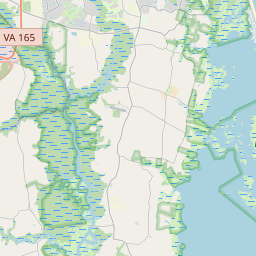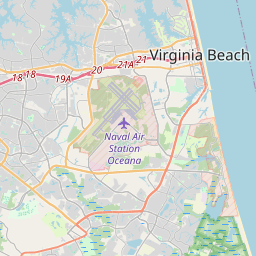Visit Us
There are many opportunities for outdoor recreation at Back Bay National Wildlife Refuge! Visitors enjoy hiking, biking, wildlife observation and photography, kayaking and both freshwater and surf fishing. Refuge grounds are open sunrise to sunset, daily.
Location and Contact Information
- Back Bay National Wildlife RefugeView Details4005 Sandpiper Road Virginia Beach, VA 23456
Tours
The refuge works with neighboring False Cape State Park to provide tram tours throughout the year. Tram tours begin at the wildlife refuge parking lot and start with a ride through the wildlife refuge to reach the state park. After a brief visit at the park's Visitor Center the tram continues deep into the state park, all the way to the site of the historic Wash Woods community. A one-mile, round-trip (optional) hike brings participants to the cemetery and church steeple, all that is left of this community. After returning to the tram, passengers are transported back through the park and wildlife refuge to the starting point. Throughout the trip the tram driver provides information about the history, wildlife and management of both natural areas.
Please visit the Blue Goose Wildlife Tram Tours page for dates, times and registration details.
Our Organization
Our Species
Over 300 species of birds and dozens of reptiles, amphibians, mammals, insects and fish have been documented at the wildlife refuge. Check out the species page for a few of the wildlife that call Back Bay NWR home.
Get Involved
Volunteers are an integral part of many aspects of the operations at Back Bay NWR. Please see the Get Involved page for more information on the types of volunteer projects typically in place at the wildlife refuge.
Projects and Research
Established for migrating and wintering waterfowl, Back Bay National Wildlife Refuge focuses on providing optimal feeding and resting habitats for birds. A freshwater impoundment complex is managed to provide waterfowl feeding and resting areas during the winter months. Outside of the winter season these wetland pools provide habitat for shorebirds, wading birds and a variety of reptiles, amphibians and mammals. Regular surveys of birds and vegetation provide information which assists in determining if current management objectives are being met to benefit our trust species.
Connecting with the community is also an important part of Back Bay NWR's operations. Refuge staff work with local schools and community organizations to provide environmental education activities that connect children with nature and foster a love of the outdoors. Interpretive programs are also conducted throughout the year for the local and visiting public.




















